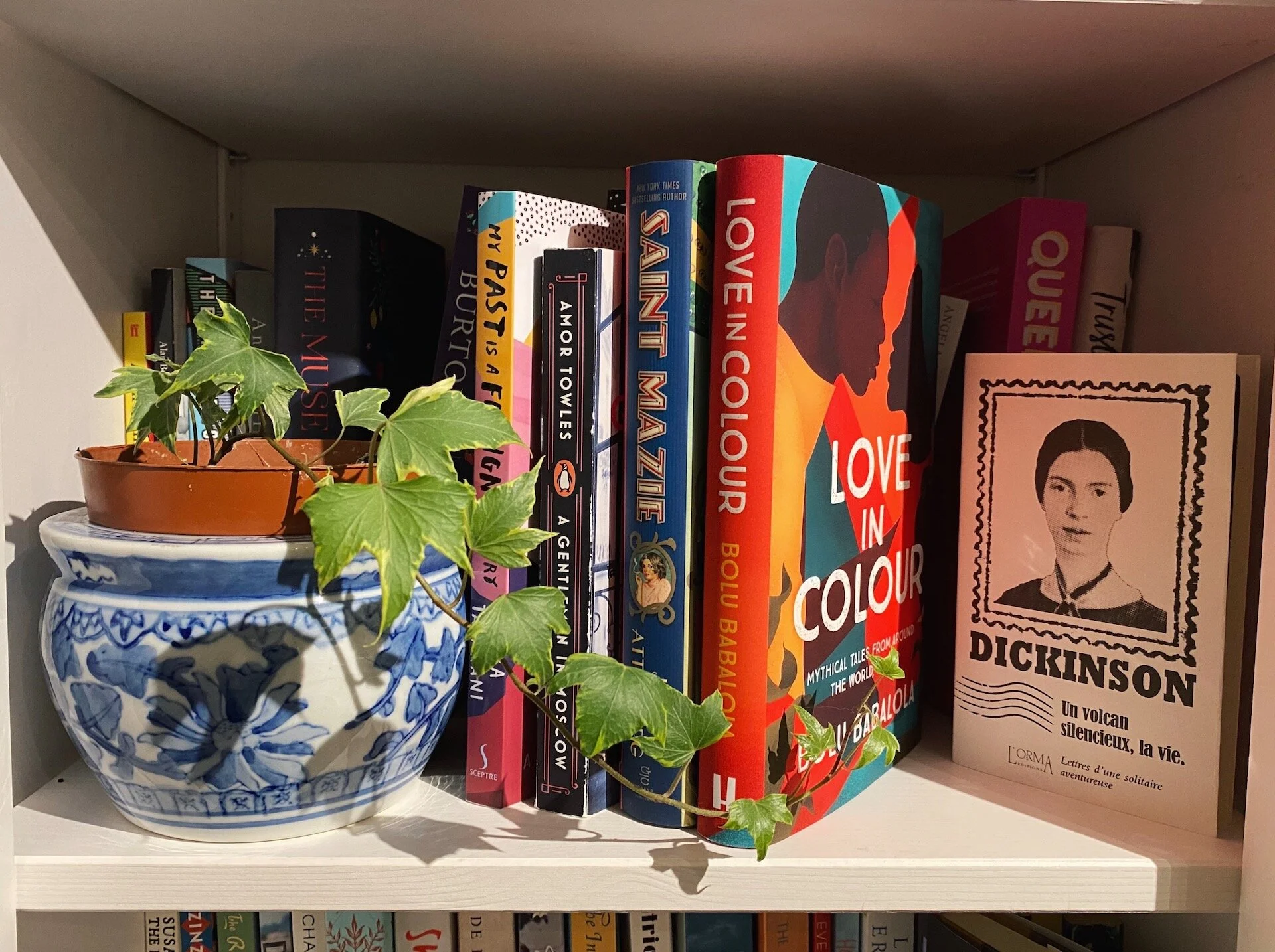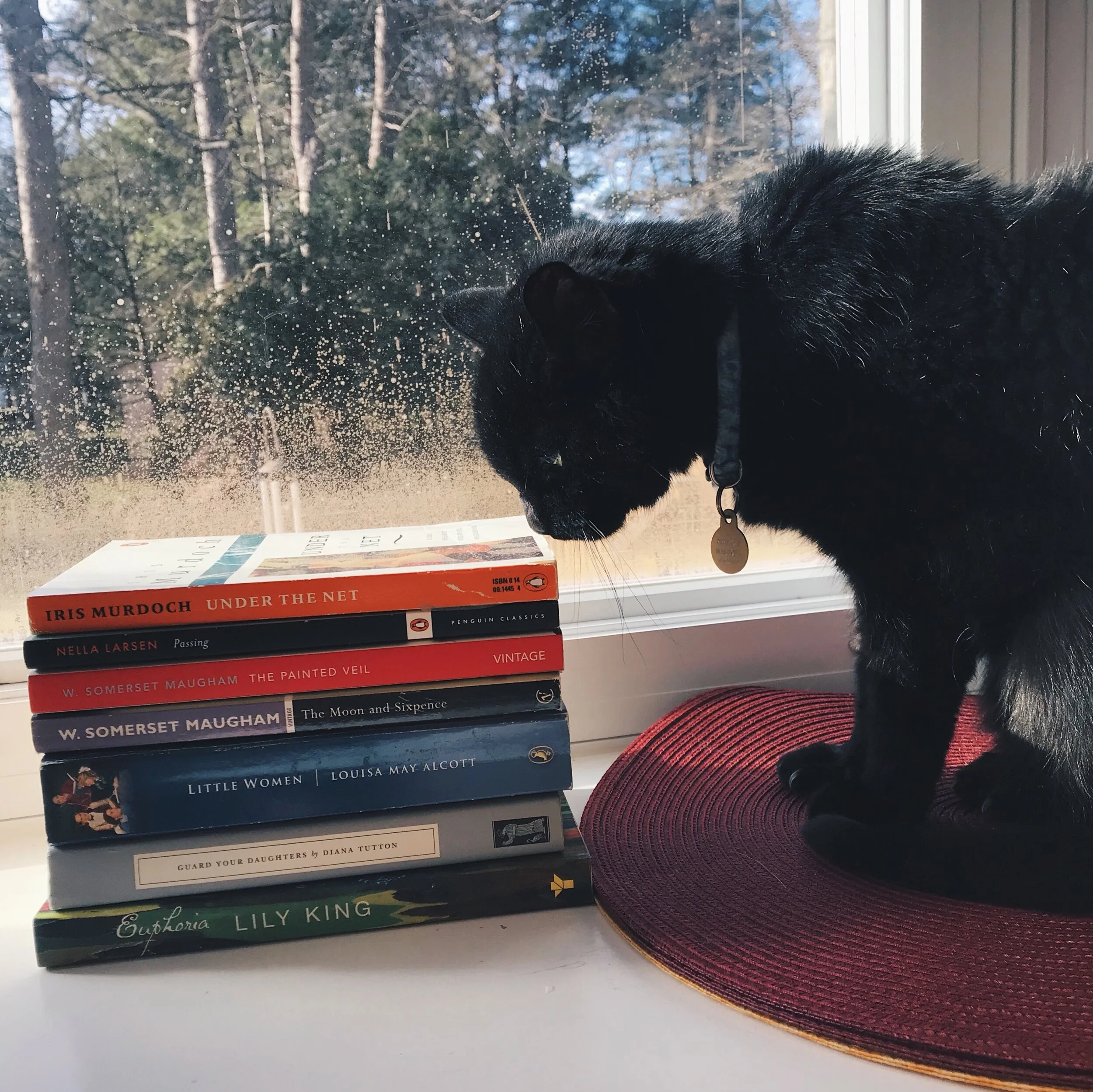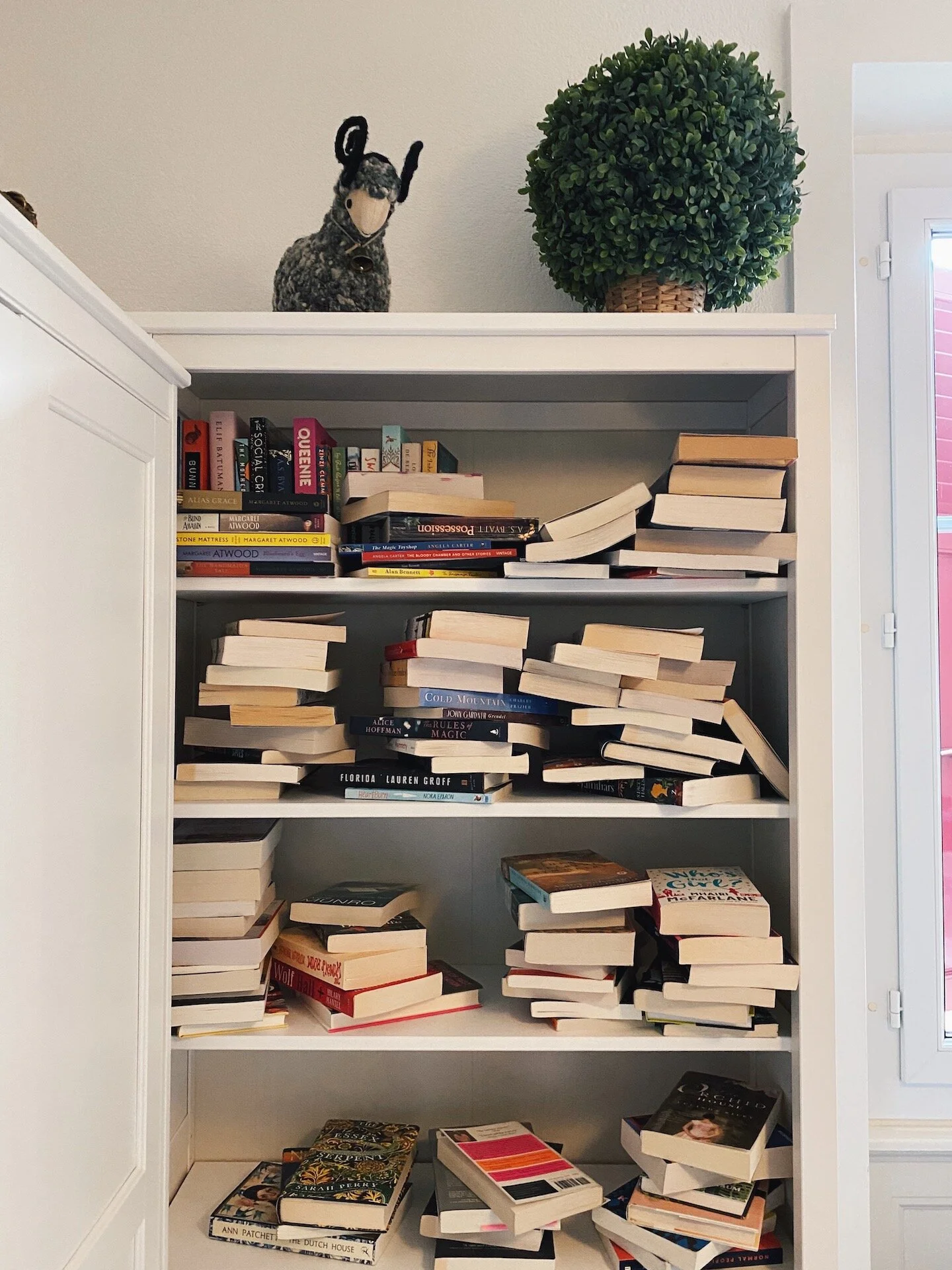Connecting With Charlotte Perkins Gilman Over A Hideously Painted Rental Kitchen
Renters. We really pay the aesthetic cost of questionable design choices. Whether your apartment was furnished in the most cost-effective way possible or is merely not to your taste, much of it is not within our control. Sure, we can plaster the walls with botanical prints, desperately try to cover cracked linoleum with contact paper, but it’s never really enough to completely satisfy those bitten by the interior design bug.
Thus, was my struggle with my rental kitchen for the past 2 years. Yellow cabinets....? Yellow floors! Yellow WALLS!? That’s too much yellow for one room to handle, and certainly too much yellow for my fragile sensibilities to handle.
“The color is repellant, almost revolting; a smouldering unclean yellow, strangely faded by the slow-turning sun-light. It is a dull yet lurid orange in some places, a sickly sulphur tint in others.” (Charlotte Perkins Gilman, The Yellow Wall-Paper)
My descent into an inconsolable frustration with my apartment began as a mild malcontentment and developed into an obsession. My poor partner watched as I rearranged our kitchen over and over again, trying to make it functional, ergonomic, and aesthetically pleasing – all to no avail. No matter what I did, the emanating warmth from the chartreuse hue of every element of the kitchen made it feel dark, dingy, hopeless.
Yet another manic reorganization.
Comically, I referred to my kitchen with various quotes from Charlotte Perkins Gilman’s “The Yellow Wall-Paper,” one of my favorite short stories written in 1892 about a woman slowly being driven mad and sick unto death by the yellow wallpaper in her room.
I say “comically” because whereas I am a middle-class white woman in the 21st century obsessing over the aesthetics of her rental kitchen which can be (and was) easily solved by a bit of paint, “The Yellow Wall-Paper” is about illuminating something far more serious.
“I say “comically” because whereas I am a middle-class white woman in the 21st century obsessing over the aesthetics of her rental kitchen which can be (and was) easily solved by a bit of paint, “The Yellow Wall-Paper” is about illuminating something far more serious.”
In the story, a woman is convinced by her mild-mannered husband to go on a “rest-cure” after she suffers a postpartum nervous breakdown. They arrive at a colonial mansion which is to become their home for the summer. The narrator notes, however, that “there is something queer about it.”
Her husband picks out the old nursery room in the house for them to stay in, when the narrator makes some strange observations about the room. Firstly, that it’s covered with a hideous sickly yellow wallpaper, but secondly, that its windows are barred and there are old metal hooks in the wall that appear to have been used for restraints at one point.
The rest of the characters dismiss these details as typical nursery fixings, but the reader is led to believe that the room had been used to restrain the mentally unwell. The symbolism present in the fact that this room is supposed to be a nursery is not lost on the reader as a weighty statement on women’s roles in society.
The patterns of the wallpaper become more disturbing to the narrator as the story progresses, appearing to “undulate” in the moonlight, making her thoughts cluttered and her stomach sick.
To the horror of her husband, she descends into madness as she claims that the movement she sees in the wallpaper is a woman trapped behind bars, “creeping” around the room on her hands and knees.
At the end of the story, the narrator grows to believe that her purpose is to free the woman trapped behind the wallpaper and goes into a frenzy tearing the wallpaper from the wall, only to realize at last that she is the creeping woman who had been trapped all along.
“Then I peeled off all the paper I could reach standing on the floor. It sticks horrible and the pattern just enjoys it! All those strangled heads, and bulbous eyes, and waddling fungus growths just shriek with derision!
I am getting angry enough to do something desperate. To jump out of the window would be admirable exercise, but the bars are too strong even to try. Besides I wouldn’t do it. Of course not. I know well enough that a step like that is improper and might be misconstrued.
I don’t like to look out of the window even—there are so many of those creeping women, and they creep so fast. I wonder if they all come out of that wall-paper as I did?” ”
Unsurprisingly, “The Yellow Wall-Paper” is a favorite amongst feminist critics of all schools. Gilman’s work was directly political and generally considered, by contemporaries as well as by later scholars, as a staunch rebuke of the patriarchy and women’s total lack of control over their own medical issues. While that remains an issue today, situations were far more dire in the late 19th century, when Gilman wrote “The Yellow Wallpaper.” Whether suffering from mental illnesses or not, women were often treated for them – frequently dismissed as hysteria – and confined to mental asylums for everything from postpartum depression (like the narrator of “The Yellow Wallpaper”) to speaking their minds a little too frequently.
The Narrator crawls over her unconscious husband in original artwork published with the story.
In her article, “The Writer as Doctor: New Models of Medical Discourses in Charlotte Perkins Gilman’s Later Fiction” Martha J. Cutter, describes a medical institution whose main struggle was to attempt to “silence women.” It was largely considered by doctors that hysteria was the result of “too much education” and an “over-stimulated” simple brain. She explains that, in the mind of the medical community, “the idea of a cured woman is one who is subdued, docile, and silent” and that a hysterical woman is “one who craves power.”
I originally quoted her story in my own kitchen as a means of being purposefully melodramatic, but there’s an important incongruity there: That I, in all my privilege, have access to so many choices that were not available to the Narrator in “The Yellow Wall-Paper”. Of course, there is still quite a long road ahead for women in the medical sphere. Reproductive rights, and women of color being discriminated against and disbelieved by doctors are just two examples of a widely systemic problem in the medical industry.
Some readers believe the story’s somewhat ambiguous ending points to the cynical conclusion that the narrator has descended into irredeemable madness, but others believe the ending portrays a young woman finally taking back control of her life and leaving a marriage that had never served her.
leaving a marriage that had never served her.
Through, and through, “The Yellow Wall-Paper’ is a gothic story. Literary historians categorize gothic literature as having a few main tenets, however one that is perhaps the most encompassing, would be the sense of mystery and fear that pervades every aspect of a gothic story.
Many gothic stories have been used to paint women as either mystical temptresses or damsels in distress, but “The Yellow Wall-Paper” falls under an interesting pattern of women co-opting the genre to tell their own stories of patriarchal oppression. Ann Radcliffe, Mary Wollstoncraft, and Mary Shelley are just a handful of examples of authors who widely popularized the gothic genre, but also used it as an artistic tool to expand the understanding of women’s roles in literature, and in the strict society they struggled against.
Finally rid of that yellow color!
There are many modern interpretations of the female gothic such as “Buffy the Vampire Slayer”, or even more recently, “Stranger Things” – both are staples that are continuously playing in my home. There is something about the gothic mystique and its rage against the romantic literature that came before it that appeals to women as a ground-breaking unique medium that spans generations. I was reading an article the other day that discussed modern women’s voracious appetite for true crime stories. I believe this to be a manifestation of the female gothic in the modern age.
Admittedly, I’ve listened to every True Crime podcast I can get my hands on, and once ate up every Nancy Drew mystery available in my elementary school library. In fact, it’s my nightly routine to come home, turn on a strangely gruesome, but equally fascinating podcast (my latest binge being the Bear Brook Podcast) and begin cooking dinner… in my extremely yellow kitchen--channeling the many gothic literary goddesses that came before me.
Even though my own aesthetic hysteria had me on my kitchen floor trying to think of ways to make my cabinets and walls look less yellow, my partner of four years was still there, holding the botanical prints steady on the wall, while I tried to decide which configuration worked better. Because he didn’t care, but it was important to me. Because I wanted to do it!
So I thank my friends and neighbors for bearing with me as I continuously groaned and lamented over my yellow kitchen. I promise those days are over. And at the end of the day, when I was thinking of writing this I kept asking myself, is this article literary analysis? Is it interior design inspiration? Well, I’m just happy I live in a world where it can be both.
It’s been a few weeks now that we’ve had our kitchen painted a cool and calming white and my mind is more at ease.
Corinne Elicona is an Event Coordinator and Crematory Operator at the historic Mount Auburn Cemetery in Cambridge, Massachusetts. She curates Mount Auburn's "Death Positive" programming and can often be seen roaming the cemetery in search of fascinating epitaphs for her next historic walking tour.

















Reading Naoise Dolan’s Exciting Times and Katie Kitamura’s Intimacies, Rachel Tay explores the unease of moving away from one’s own country and language.